

Whenever I tell people I like to travel by myself, I get one of two reactions. It’s always either “Wow, I could never do that” or “Are you sure that’s safe?”, and I’m frankly tired of explaining to people that I don’t travel solo because I have no friends or because nobody wants to travel with me.
Here are some reasons why I wouldn’t recommend travelling alone, because it’s really not for everyone.
Solo travel is for people who are not afraid to talk to strangers. People who feel comfortable initiating a conversation with someone they’ve never talked to and who don’t fear rejection and embarrassment.
If you would self-identify as an introvert, don’t travel by yourself. If you would rather curl up on your couch and immerse yourself in the newest J.K. Rowling novel than be out at the club, sipping on a G&T and showing off your dance moves, don’t travel solo.

Solo travel is expensive. There. I said it.
Eating out for one is more expensive. You’ll have to deal with the single supplement. You won’t be able to take advantage of certain deals.
If you don’t have a bit of money saved up to splurge on a nice trip to treat yourself, don’t travel alone. Because the fact is that you will need that money, especially as a solo traveller. You’ll be more prone to unexpected situations that could cost you a lot of money and you won’t have anybody else to fall back on to solve those problems.
All I’m saying is you shouldn’t trust resources like my free ebook about cheap solo travel. They’re empty words and all they’re doing is selling a pipe dream that is too good to be true.
When I talk to women about travelling alone, they tell me they’re too concerned about their safety abroad to take the leap and travel solo.
Honestly, I don’t blame them.
I’m not going to sit here at my desk while writing this blog post and tell you that solo travel is safe, let alone for a woman travelling alone. You are absolutely taking a risk and anyone who tries to convince you otherwise is either very naive or just plain ignorant.
There are plenty of blog posts that give solo female travellers tips to stay safe. Why do you think there are so many of them? (Answer: because they’re needed.)
The most selfish thing you can do as a traveller is leave everyone you care about behind.
What do you mean, you’re not taking anyone else on this trip? Do you really want to deprive your family and all your friends of a wonderful holiday with you?
Solo travel is really only for selfish people. So please don’t embark on a solo adventure if you’re selfless. You’ll hate yourself for making that decision and you’ll hurt the ones you care about most.
Speaking from experience, you’ll get lonely as a solo traveller. Especially if you’re an introverted solo traveller.
I’ve written about making friends as a solo traveller and made it seem like that wasn’t hard. But it is. Making friends with strangers is one of the most difficult things I had to face on my first solo trip to Dublin.
And don’t even get me started on getting homesick. I know it’s counterintuitive for a travel blogger to get homesick when travelling, but it’s the reality. If you’re even a tiny bit like me, you’ll want to go back home the moment your trip starts. Don’t travel alone.

You will have to sacrifice time and money to travel alone. That’s not an opinion, it’s just a fact.
You’ll need to take time off. Precious time during which you could be working on your next project or starting new projects. You’ll be letting everyone at work down by leaving them for a certain amount of time, disrupting the natural flow of things.
You’ll need to have some money saved up, as I mentioned above. But just saving the money isn’t enough – you need to be comfortable with using that money to finance your trip. Gone are the hours of work you put in to make that money. I’m just saying.
So, if you really think your career is important to you, you might want to reconsider taking this solo trip.
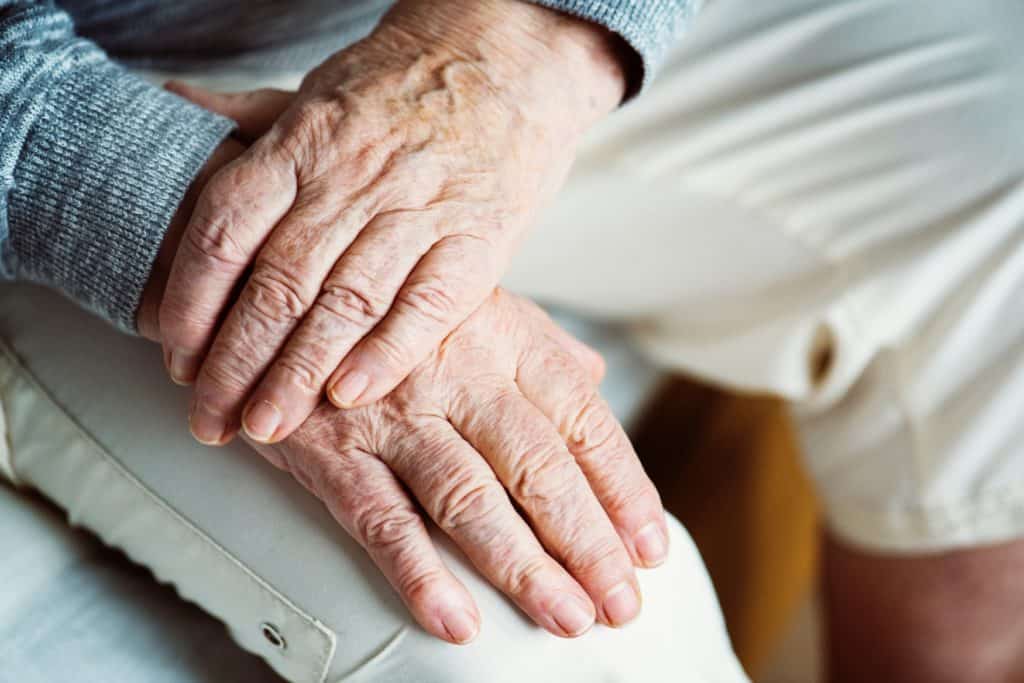
It’s a tough world out there, and that statement only gets more true the older you get.
You’ll find that your accommodation options get more limited as you grow older and expect, or even need, more comfort.
The general rule of thumb is this: if you’re older than 25, it’s not worth it. You can get a sense of adventure from somewhere else, but please don’t travel on your own.
You understand sarcasm.
If it wasn’t clear yet, the main point I was trying to get across in this blog post was that solo travel is absolutely a possibility for everyone. Not everyone will want to be on the road alone, but that doesn’t mean you shouldn’t have the option.
Every reason I mentioned here has been debunked.
Solo travel is not inherently expensive.
Travelling by yourself is not selfish.
Women can absolutely travel alone. In fact, female solo travel is one of the most popular branches of the blogging world, with great bloggers like The Blonde Abroad, Be My Travel Muse, Adventurous Kate and Young Adventuress, among many others. Just throwing it out there.
If you really want to embark on a solo adventure, don’t listen to all the people who try to bring up arguments why you shouldn’t do it. If your heart is telling you to take the leap, do it.
Note: this blog post is based on a chapter of the Solo Travel Handbook (Lonely Planet). If you are considering solo travel, this book is a great starting point.
In case this blog post hasn’t made the idea of solo travel completely unappealing to you, sign up to my newsletter below and you’ll get 10 of my best tips to help you rock your first solo trip.
Thanks for reading!
-S

The Expert Vagabond is our last Free Spirits Friday guest. Sadness.
But it’s a big one.
Matthew has ages of travelling experience, and, as his name suggests, he is an expert vagabond. If you’re interested in anything related to adventure travel, travel photography, nomadism, backpacking or off-beat travel destinations, Expert Vagabond is the place to be.
It goes without saying that Matthew has a lot of expertise to share. So I asked him some questions about adventure travel, living as a digital nomad and settling down.
This is the story of Expert Vagabond.

Back in 2009 I was living in Miami working as a freelance photographer, but felt lost and wanted to do something new. I wasn’t sure what though. I began reading some books about long-term travel recommended by some friends who were backpacking around the world, and decided that if they could do this, so could I! So I spent the next year saving money, downsizing my life, and building a small online business selling ebooks.
In the fall of 2010 I flew to Guatemala and began backpacking around Central America on the cheap, and writing about it on my new travel blog, Expert Vagabond. After a few months, I realized I wanted to continue for as long as possible and began looking for ways to earn income from the blog. I’ve been working as a professional travel blogger ever since.
Getting myself into challenging situations, and learning what I’m capable of (or not). Learning about the world through my own first-hand experiences and not reading about other people’s. Always meeting new people and seeing fascinating places.
There are many. Some that come to mind:
After years of living out of a backpack, it was just time to settle down. Constant travel takes a toll, and I was burned out. I missed having a regular group of friends, chilling on my own couch with a good movie, owning stuff, and having a long-term romantic relationship. All of those things are tough if you’re constantly travelling.
Both are equally wonderful to hear! Other people helped me with these things, I’m always happy to know that I could do the same for someone else.
Anna and I travel together often, but we also dedicate time to travelling solo too. I don’t want to do everything she does, and she doesn’t want to do everything I do. I think it’s important to mix it up a bit and have some personal time to explore our own passions without the other always tagging along. She agrees!
Related: Making friends as a solo traveller
Sure. I’m spending more time in big cities than I used to, and she’s spending more time hiking mountains with me. But I think it’s good for both of us, and it’s definitely nice to share amazing travel experiences with someone you love. And we both help each other out when it comes to business tasks — like taking photos for each other or bouncing ideas off one another. She books travel stuff (which I hate doing), I lug photography gear around (which she hates doing).

You really can’t until after the fact. I try not to scare my family too much and explain to them in detail why what I’m planning is actually safer than it might seem. Knowledge is power!
But some of my trips are still a little risky, like hiking solo anywhere remote for long-distances, or hopping freight trains, or wandering around Mexican cartel territory (still working on that article BTW). Sometimes they find out after the fact that it was kind of dangerous — but by then I’m back safe!
Sure! For photographing people. You need to interact with people and chat them up a bit before sticking a camera in their face. And ALWAYS ask permission for their photo if it’s a close-up portrait. Also, talking your way out of trouble. Haha. Miami nightlife is full of sketchy characters, and knowing how to interact with people like that certainly helped while travelling to sketchy destinations.
Well, I’d already spent some time in Mexico, so my plan was to begin in Guatemala and try to work my way down to Panama from country to country via bus. Central America was cheap to visit, and so was the flight down there. I didn’t have much money to spend, so it felt like a good way to see many places on a budget.

I thought travel was only for rich people with company vacation time. All the travel marketing I’d ever seen was for fancy resorts and guided tours. It wasn’t until I started reading about budget backpacking that a whole new world and opportunity opened up for me. I didn’t know there were people out there travelling long term for less than $1000 per month! I didn’t know there were places called “hostels” where a bunch of people shared a room together. It was an epiphany!
There are still so many, but Bolivia is high on my list right now. So is the Eastern European country of Georgia. I’d love to do some trekking in both soon!
I’d like to thank the man behind Expert Vagabond again for helping me out with this interview. Matthew, you’re great and I’m very grateful that you took the time to answer these questions.
You can check out the other Free Spirits Friday interviews here. If you’re wondering how an English woman moonlights as a dj in Spain or how an American couple lives in Korea, this is the place to be.
Thanks for reading!
-S

A Canadian travel enthusiast with a passion for history, culture and all things macabre, Wandering Crystal wanted to experience somewhere new by becoming a local. To transform that dream into a reality, she moved from Canada to Scotland. The adventure she had moving abroad was the most rewarding of her life and she hopes to inspire others to have their own meaningful experiences through living abroad, too.
This is the second to last interview in my Free Spirits Friday series. (Sadness!) You can check out the others by clicking the link above!
If you’re only interested in one particular interview, here they are:
Without any further ado, let’s see what Wandering Crystal has to say about her time abroad and her life as a nomad.

Hello, friends! I’m Crystal and I fell in love with traveling when I took my first trip out of Canada at the age of 16. Having stayed with a friend in his home country of England, I became completely captivated by the similarities and differences between both cultures.
In addition to being bitten by the travel bug and making immediate plans to backpack across Europe once I graduated, I began to wonder what my life would be like if I lived elsewhere. I loved the idea of experiencing the world in an entirely different way.
Related: Studying abroad in Salamanca, Spain
I thrive on learning about people’s lives. Besides: getting to know others from around the world opens doors to their countries, languages, histories and what it is about their home they’re most proud of. It really helps me understand the world and makes me feel closer to humanity as a whole.
Canada is very multicultural, so you don’t have to travel far to meet people from all over the world. This means I get a lot of opportunities to learn about other people and the countries they’re from.
Since I always wanted to experience life in another country, working, mixing with the locals and feeling like a member of the community, I decided to make it a reality. This led to me moving to Scotland for 2 years and it was the best decision I ever made.
When I was first picking a place to live, I had a limited choice of countries. I had to go somewhere that would accept a temporary worker from Canada and a place where the residents spoke English. This restricted me to Australia, New Zealand, Ireland, Wales, England and Scotland.
As I have a love affair with Europe, I decided the UK was the place to be! And since I like a challenge, I wanted to live in and explore a country I’d never been to. Having already visited England, I decided Scotland was the way to go. Plus, I’d seen pictures of the lush green fields, quaint stone buildings and a city with a castle that sits upon a hill, which automatically earns a few points in my book! I was also smitten with the Scottish accent — it’s one of my favourites.

I wish I could pinpoint a specific moment in my life that made me fall in love with the macabre. I’m passionate about understanding the history of a place and European history is something I find particularly fascinating.
I like to understand the thought processes and reasons events happened long ago, visiting ghost towns and abandoned buildings, imagining what life was like in their heydays. I also love seeing Victorian gravestones and envisaging what the person was like and how they lived.
The macabre side of the world appeals to me because I can learn how humans reacted when they were at their most vulnerable, such as during the Plague and world wars. It reveals a unique side of history.
Related: Why I visited an abandoned children’s hospital in Berlin
Europe is a haven of dark tourism because there’s so much incredible history. I was completely hooked when we started learning about European history in highschool — I found life in the 1400s-1900s completely captivating. The way the world was changed through wars, diseases and the advancement of technology helped me discover a world that I hadn’t been part of. But studying history created a new world that I was now part of.
Due to Edinburgh’s history of darkness (being affected by the Black Plague, having public executions and witch trials, and being home to infamous body snatchers Burke and Hare) it was the perfect place to explore as a dark tourist.
I became obsessed with historic places in the city, like the South Bridge Vaults and Mary Kings Close. Seeing how people were treated during the outbreak of the Plague was completely fascinating.
In my part of Canada there are a few dark tourist sites, such as ghost towns and a creepy museum called the Museum of Fear and Wonder. But it’s considerably more challenging to find and explore dark tourism sites in Canada than it is in the UK. I believe this is because Canada is a younger country. Its large size also makes it a lot more difficult — it really takes a lot of planning because sites are so few and far between.

I didn’t notice a difference at all. People treated me exactly the same in both countries. I never felt unsafe in Scotland (nor do I in Canada) and I never felt like my gender got in the way of working or travelling opportunities in either country.
I don’t know if this is necessarily something that everyone gets by living abroad, but it really gave me a new lease of life. Living abroad was incredibly challenging, especially as I’d never previously lived in or even visited Scotland before. The experience taught me so much about myself and made me incredibly happy. I learned to say yes to people and experiences I would have previously avoided and I learned how to push myself in a positive way. I gained confidence which transformed into happiness.
If I had stayed in Canada, I would have never experienced the same kind of happiness. Canada was my comfort zone, but I wasn’t happy with how my life was. I wanted more and Scotland gave me that.

I didn’t travel as much as I wanted to. Yes, I visited a few countries, but spent most of my time exploring Edinburgh and a few other parts of Scotland. I really wanted to get a taste of Scottish living and I was completely in love with Edinburgh. I spent the entire first year of my 2-year stay in Scotland there. It was exactly the kind of life I wanted to experience at the time.
I ventured out to other countries in my second year of living there and I visited some amazing places! I do wish I had more time to explore a bit more. But because I want to be a long-term and full-time traveller, I hope to be able to experience this kind of travel eventually.
Start your morning in Princes Street Gardens, formally the Nor’ Loch which was once a large body of foul, stench-ridden water that the residents of Edinburgh used as a waste dumping ground. It was in these stagnant disease-riddled waters that suspected witches were drowned. After that, head towards Lothian Street, where an incredibly beautiful graveyard sits in St Cuthbert’s Churchyard. The gravestones here are weathered and covered in moss.
Then spend an afternoon on a tour of Mary King’s Close beneath the City Chambers, deep below the Royal Mile. This close was greatly affected by the Plague in 1645 and it’s where you can learn about this period of history and how they figured out what caused the disease.
The best way to spend the evening is to take a ghost tour in the South Bridge Vaults. These vaults are also tucked under the streets of Edinburgh and were once a breeding ground for thieves and murderers, including the infamous body snatchers Burke and Hare.
Top your night off by lurking in the darkness at Greyfriars Kirkyard. There’s a particularly well-known poltergeist called the Mackenzie Poltergeist who’s known for giving passersby a push or even leaving a scratch or two!
My working holiday visa was only good for 24 months, so I had no choice. I originally only planned on living in Scotland for about 7 months, but loved it so much that I stayed for 22! If it was easier to live in countries other than Canada I would definitely spend my life living and moving from country to country. I love the experience living abroad gave me – I would happily do it over and over again.
When I came back, my life wasn’t really any different than it was prior to moving abroad. I felt a lot happier than before I moved to Scotland. It seemed to refresh me and I wanted to tell everyone how great it is to experience living abroad. It also gave me even more devotion to explore. I realised that travelling was truly my passion and I needed to get back out there.
As much as I love Canada (it’s an amazing country!) and being a Canadian, I knew that if I settled here I would become unhappy again. I would slink back into the depression I felt before I moved to Scotland and I was determined not to let this happen.
Canada may be home but the world is exciting. That exciting place is where I want and need to be to live a truly fulfilling life.
I loved being able to walk around everywhere, I loved the rain and the cooler temperatures. It was always hoodie weather! Plus, it’s so much easier to explore other countries using Scotland as a base. I was finally able to say what all North Americans dream of: “Oh, I’m just going over to Italy for the weekend.”
Plus, Scotland has way more free and cheap services than Canada does. They have free banking (we pay extortionate bank fees in Canada), cheap unlimited mobile phone plans, really cheap contacts and eyewear and you pay a max of 3 pounds for any medical prescription.
I missed a lot of things — friends, family, my pets and most importantly a place to buy a good pair of pants! Furthermore, I learned that I really enjoy nostalgia while living abroad. I found myself bonding strongly with one of my coworkers who was born and raised in Philadelphia. She was living in Scotland with her husband and we would chat non-stop about awesome things from our childhoods in North America.
Now that I’m back in Canada, I’m more nostalgic than ever! I love watching old movies, shows and chatting with friends about our childhoods. Also, where I live in Canada we have 4 seasons. Scotland really only has rain in the summer and colder rain in the winter. Canada is home, but Scotland is my home away from home and I wouldn’t change a thing.
I want to thank Crystal from the bottom of my heart for giving us some insights into what life is like for a Canadian woman in Scotland.
You can follow Crystal’s stories on her blog, Wandering Crystal and her Facebook, Instagram and Twitter pages.
Thanks for reading!
-S
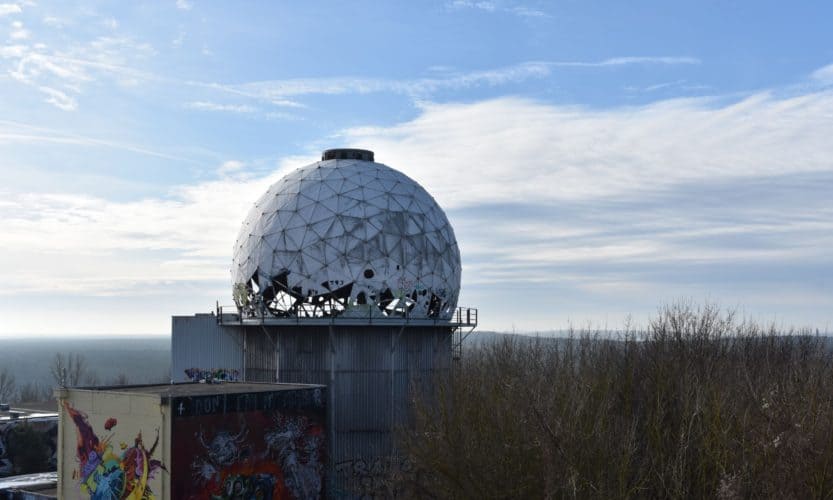
With over 3.5 million inhabitants, Berlin is one of the biggest cities in Europe. Besides heavy traffic and a very well-thought-out public transport system, that means that there is a lot to do here. The reasons why you should visit Berlin will quickly become clear if you keep reading. This is my three-day, off-the-beaten-path Berlin itinerary for solo travellers.
Note: this post will be something between ‘what I did in Berlin’ and ‘what you should do in Berlin’. That being said, if I recommend a hostel, a restaurant, a café or an activity, it’s because I enjoyed it there. But it’s also because that’s what I did. Feel free to use this Berlin itinerary as a starting point and make your own travel itinerary according to your wants and needs.
I was in Berlin in February 2019, from Monday until Friday. However, I didn’t really get to do any things worth mentioning on Monday or on Friday because of my flight times. For that reason, I’m only including three full days in this itinerary.
This 3-day Berlin itinerary will give you a good idea of what to do in Berlin and what you can expect on a trip to the German capital.
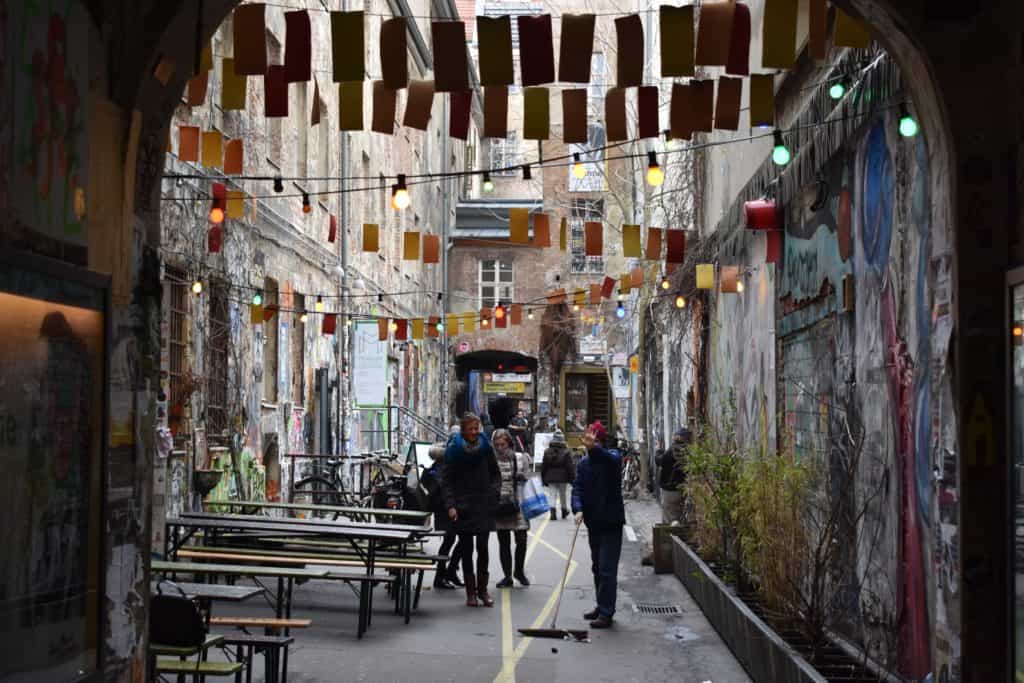
Visiting Berlin off-the-beaten-path doesn’t mean that you can’t visit popular tourist attractions. It just means that you don’t want to spend your entire trip looking at them.
If you’re like me, you’re not fundamentally against popular attractions. You don’t stay away from the Eiffel Tower in Paris or Dam Square in Amsterdam just because many people visit them. After all, there’s a reason why tourist attractions are so popular.
So, since these attractions are still appealing, even when thousands of people lay eyes upon them every day, we’re going to cram the most important sights of Berlin into one day.
Day 1: Morning
After settling into Berlin, you’re going to check out a guided tour of Berlin during the wars of the 20th century.
Day 1: Afternoon
Now it’s time for the bare Berlin essentials. DDR Museum, Bebelplatz, Gendarmenmarkt, Memorial to the Murdered Jews of Europe, Brandenburger Tor and Reichstag Building. It’s going to be a busy afternoon.
Note: I didn’t include Checkpoint Charlie in this day (or anywhere else in this Berlin itinerary) because I personally believe it’s not worth a visit. It’s become too much of a tourist trap recently and it’s supposedly really underwhelming.



I told you to get up early, right? You’ll see why that is if you just keep reading. But let me tell you: it’ll be worth it.
Day 2: Morning
This morning, your main project is to visit the abandoned children’s hospital Kinderkrankenhaus Weißensee. You might think “But why would I want to visit a place like that?” and the answer is simple. Street art.
Related: Why I decided to visit an abandoned children’s hospital

Day 2: Afternoon
The next things you should be looking forward to are a free alternative walking tour, guided by locals, and an exhibition about the human body.

The last day of this Berlin itinerary will have you exploring some famous abandoned sites in Berlin, as well as checking out an iconic remainder of the Cold War and an indoor street food market.
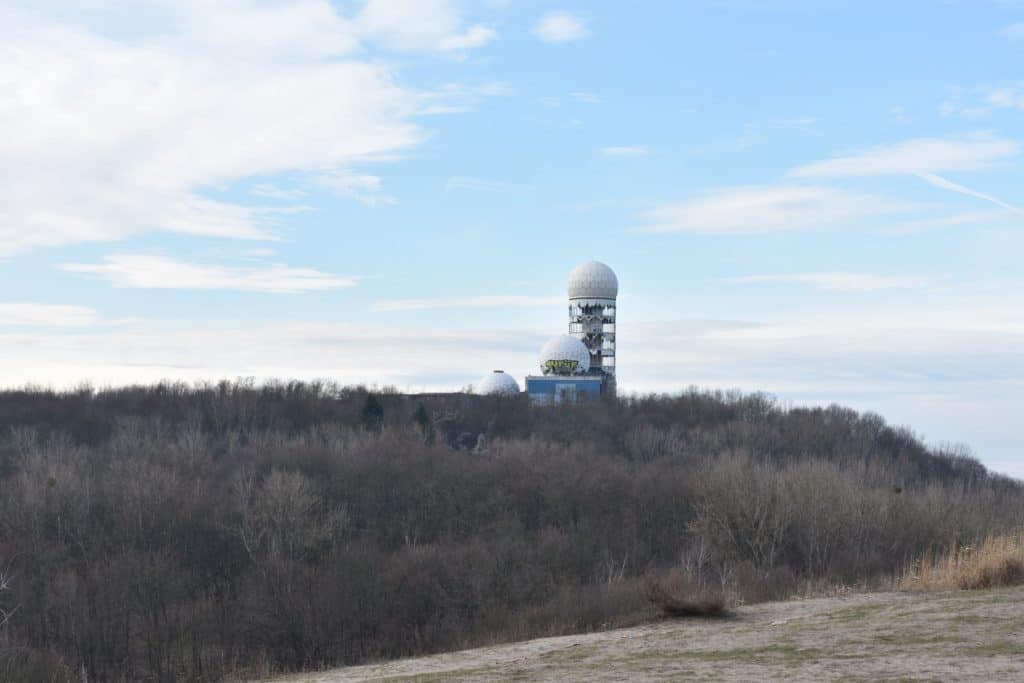
Day 3: Morning

Day 3: Afternoon
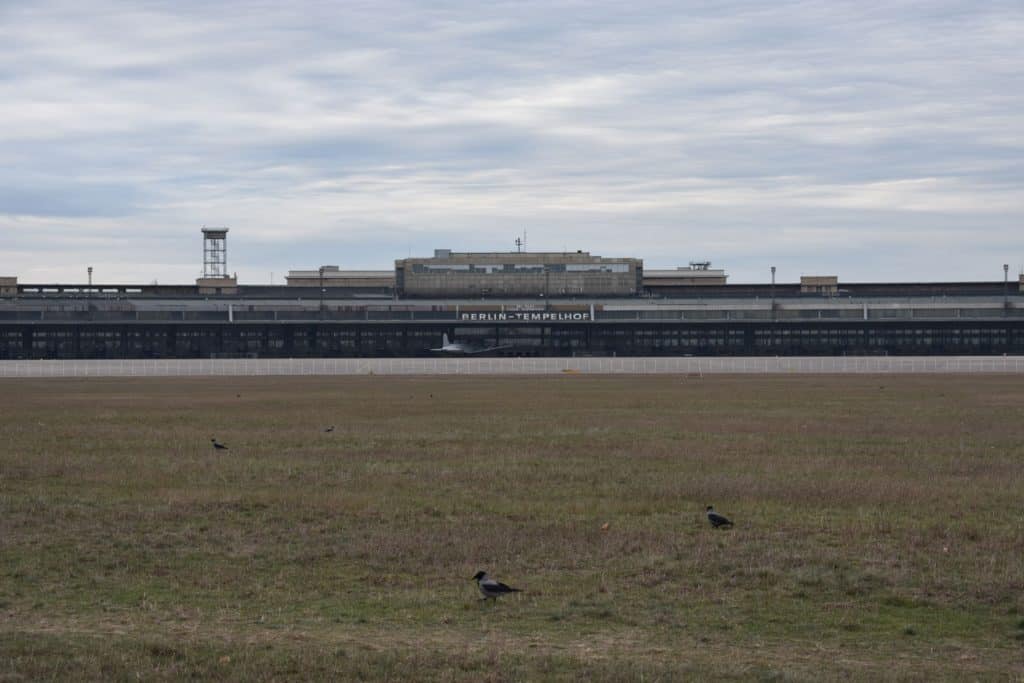

This is the end of my 3-day solo Berlin itinerary. Hopefully, it’s given you some ideas for things to do in Berlin ‘off the beaten track’, because the German capital is more than just Checkpoint Charlie and Brandenburger Tor.
However, a Berlin itinerary is not the only thing I’m giving you in this post. Although you could stop reading right now if you wanted to. I won’t be offended – and I’d likely never find out anyway.
How expensive is a city trip to Berlin? How long should I save up for this trip?
Luckily for you, I kept track of literally all my expenses while I was in Berlin. So, this is not only a Berlin itinerary, but it also gives you an answer to the question “Is Berlin expensive?”
Honestly, it is quite expensive, but Berlin prices tend to be very similar to any other major western European city.
Note: I used an app called Tripcoin to keep track of my expenses. My flight to Berlin touched down at 2:30 pm on Monday and my flight back home departed in Berlin at 11:05 am.
This is everything I spent that had anything to do with my trip to Berlin.
I know this might sound like a lot, but for a 5-day solo city trip to a big city in western Europe, I’d say it could have been a lot worse.
If you want to splurge on a nice hotel and a fancy restaurant, be my guest. If you want to spend as little money as possible, be my guest. The point of travelling solo is that you can do whatever the hell you want to, so I’m not going to sit here and tell you how much money you should spend in Berlin.
I’m just giving you this information so that you can decide for yourself.
There — now you know why Berlin has become one of my favourite cities to spend time alone in Europe.
Have you ever been to Berlin? What did you think of it?
If you haven’t gone to Berlin, would you consider going there? Why (not)?
Thanks for reading!
-S
PIN IT!




Our next guest for Free Spirits Friday is not actually one person. They’re originally from Seattle, they’re married and they live in South Korea as English teachers. Ladies and gentlemen, meet Eric and Grace, the Wandering Ravens.
I got to know Eric because I stumbled upon one of their articles when their blog was still known as Seattleites Abroad. I left a comment because I loved the way the article was written, and a friendship gradually grew from there on out. Since then, we’ve been sending messages and emails back and forth, and I’d actually call Eric a friend now.
Either way, I asked them if I could ask the Wandering Ravens a few questions for this series, and they gladly agreed. Here’s what they told me.

Hi! We’re Eric & Grace, a married couple from Seattle, USA. We moved to Korea two years ago and work here as English teachers.
Eric – When I was young, my family hosted a lot of foreign exchange students in our home. Of these, the ones I seemed to connect with the best were the Koreans. For this reason, I grew up always wanting to visit Korea for myself one day.
Eric – It was a gradual decision. I always told my host-brothers & sisters that I would go visit them in Korea one day, but it wasn’t until I started University that I made an official decision to move here. Then Grace and I got married, and Korea seemed like a good launching pad since both of us really wanted to travel together.
Grace – Yes, to be honest, I hadn’t really ever thought about Korea before meeting Eric. But he talked me into jumping into the unknown with him, and so that’s what we did! We moved here without knowing the language or food, and it’s been a pretty wild ride 🙂
Grace – I would recommend it to everyone! Moving abroad is something each person should experience at least once, and you gotta do it for at least a few months. So much of your personality and who you are gets unlocked when you travel. It grows you, stretches your mind, and opens you to new beliefs and possibilities. So much of who I am is a result of the years I’ve spent traveling — the years here in Korea, and my time in India, Bangladesh, and Nepal.
Eric – I definitely agree with her. There is no faster way to “grow up” than to drop yourself into a new country where you don’t know the language or culture and have to learn to survive in it. It involves constantly stepping outside of your comfort zone, making friends with people you never thought you’d connect with, and bonding with sights, smells, and sounds that you have never even imagined. Should you move abroad? I say it’s a resounding yes!

Eric – Good coffee! And I do miss the mountains.
Grace – I don’t mean to sound cheesy, but what I miss most is my family. Especially when we miss a holiday due to travel. The road can be lonely sometimes.
Eric – I can’t speak for other nationalities, but for American tourists it is extremely easy to get into Korea. All you have to do is fly here and you’ll get a visa at the Korean airport.
Grace – Of course, if you’re coming to work here, then you’ll need to get a special visa from the embassy in your country.
Eric – We’ve been away from home for a long time, so we’re planning on moving back to Seattle this winter so that we can spend some time with family and friends.
Grace – Yes, we’ve missed a lot of weddings, births, and unfortunately some deaths, so we have a lot of catching up to do with your friends and family back home. We do have some crazy awesome travel plans for 2019 though, so you can expect us to be back on the road once Spring comes.

Eric – We’ve been stationary in Korea for the last two years, so even though we’ve technically been traveling, it does sometimes feel like we’re living a “settled” life. We’ve considered this time in Korea a launching pad though, so have been working on a lot of projects for the future. Our blog, Wandering Ravens, and our YouTube channel has been one project, creating our savings has been another, but the project we’re most excited about is the SEO content writing business we’ve been building for the last year.
Grace – We’re really excited about our writing business because it means that we’re able to work from wherever we have an internet connection! No more year-long school contracts! We can truly experience the open road!
Eric – Yes! I just have to hop back in here and say how excited I am to finally graduate from English teacher to Digital Nomad. So while we haven’t traveled a lot outside of Korea in the last two years, we’re going to start moving really soon. If you’re curious to see what we write, here’s the link to our site: Writing Ravens.
Eric – Learn as much as you can about the culture before coming here. Learn how people act, what is considered polite and impolite, and get used to eating kimchi! If you’re curious what Korean customs you should know before visiting Korea, check out this blog post I wrote about it on Wandering Ravens.
Grace – I agree. Make sure you read up on Korean culture and social norms before coming here. I wish I had been more prepared for how much Korea’s standard of politeness differs from what we consider polite back in the USA. Read my answer to question #11 for more on that topic.

Grace – Technically, yes, we’ve been to North Korea! We visited the DMZ last year and were able to explore the Joint Security Area while we were there (that’s the border crossing with all those blue UN buildings). The blue buildings are built directly on the border, with half being in North Korea and half being in South Korea. We got to go inside one of the blue buildings, and so we can say that we have walked into North Korea! 😀
Eric – Would we ever want to do a proper tour of North Korea? On the one hand, I would like to, because I’d love to visit every country in the world. But, I don’t think we’ll be visiting the North anytime soon because we believe in traveling in a way that is healthy for our planet and its people. Supporting the government of North Korea through tourism isn’t healthy for the people living under the dictatorship there.
Eric – Oh gosh, so many differences. The biggest one for me is food. Korean spices and flavors are completely different from anything we use in the States, so moving here was a big shock for my stomach. I’d never eaten Korean food before moving here, so it took me a couple months before I was used to the food. I love it now, of course, and will probably be craving Korean food for the rest of my life!
Grace – The biggest difference for me is the different standards in politeness. Korean people will shove you out of the way and steal a subway seat from you even if you were about to sit down in it. They don’t acknowledge you when you make eye-contact on the street and no one smiles in public. Old ladies here are notorious for cutting in line — if I had a dollar for everytime someone has cut us in line, either at the mart or while waiting for the bus, I could stop working and retire right now. The different standard of politeness took me a while to get used to.
Eric – In terms of similarities….there aren’t that many, culturally. Except for appearance. Korea looks like a modern 21st century society, with skyscrapers, advanced public transit, etc. But besides that, I can’t really think of any similarities. The USA and Korea are very, very different in terms of culture and values. You have to come experience it for yourself!

Grace – The Korean alphabet is one of the sexiest alphabets ever created. It is SO easy to learn, that you could do it in a week if you really pressed yourself. If you move to Korea, you should at least learn how to read, because you have no excuse not to. As a tourist though, you don’t need to worry about learning the language, because Korea has A LOT of English. There are English signs and menus everywhere (especially in Seoul) and if you need help you are almost guaranteed to find someone who speaks English around you.
Again, I’d like to thank Grace and Eric for letting me ask them all kinds of questions about their lives in Korea. I gained a lot of valuable insights and it was very interesting to read about their experience.
If you want to follow the Wandering Ravens, you can do so on their blog, on Facebook and on YouTube.
Design by NXNW.